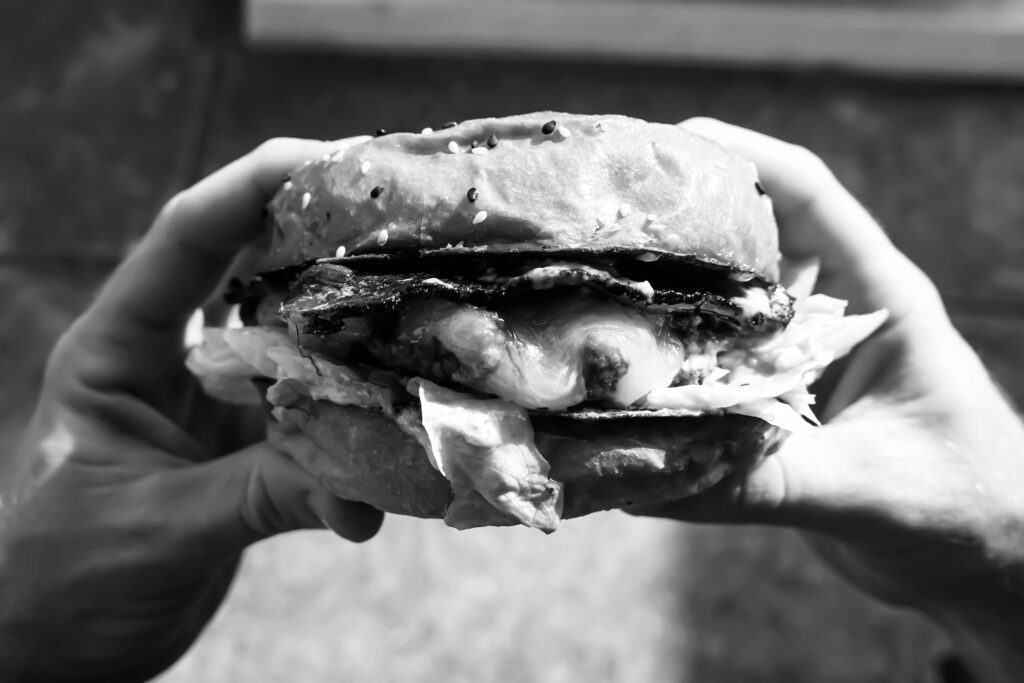This blog post looks at psychosomatic theories of diabetes, from Walter Cannon’s concept of ‘emotional glycosuria’ to the myth of the diabetic personality. We will discuss the problems with the term ‘brittle diabetes’ and the importance of differentiating type 1 and type 2. We also explore the problematic statements on diabetes by Helen Flanders Dunbar, one of the foremost proponents of psychosomatic medicine. Dunbar stated that “the diabetic partner often wants to be babied more than is usually compatible with mutual happiness” and that diabetic patients persuade doctors “to play mother to their childishness.”

Honey urine and the pissing evil
Diabetes is an illness that characterizes our modern times. In the United States, an estimated 10% of the population lives with diabetes. Almost everyone knows someone with the illness. This contrasts with earlier times when diabetes was much less common.
Doctors recognized diabetes at the hand of ‘three poly’s’: increased volume of urine (polyuria), extreme thirst (polydipsia), and weight loss despite an increased appetite (polyphagia). It seemed as if the patient’s metabolism was going into overdrive. And there was one other notable feature: the sugary taste of patients’ urine. The ancient Hindu physician Sushruta labeled diabetes as a disease of ‘honey urine’ (this was clearly a time when clinical examinations were very thorough!).
In Europe, oddly enough, the sweet taste of urine in people with diabetes was not well known until Thomas Willis rediscovered it in the 17th century. With Willis, our journey into the psychosomatic history of diabetes begins. He speculated that “the pissing evil”, as he sometimes referred to it, could be provoked by ‘prolonged sorrow’.
A nervous disease
Before the 20th century, it was common to speculate that stress or emotional trauma might cause diabetes. The famous pathologist Claude Bernard reported that he could make an animal (temporarily) diabetic by puncturing the fourth ventricle in the brain, causing glucose to appear in its urine. This sparked a discussion of a ‘nervous’ origin of diabetes. Juicy anecdotes appeared in support of this view. The German physician Bernhard Naunyn, for example, noted a case of diabetes that developed during the bombardment of Strassburg in 1870. Horace Victor Pike wrote of patients with psychosis in whom evidence of diabetes “appears solely as a complication of the mental disorder.”
In her book ‘Diabetes: A History of Race and Disease’ historian Arleen Marcia Tuchman summarizes:
“Almost every discussion of diabetes’s etiology at the time included some reference to the nerves—whether nervous strain, nervous temperament, nervous derangements, nervous tension, or the nerve-shattering aspects of city life. Indeed, Jacobs and Fishberg believed there was ‘no room for doubt’ that “sudden emotional excitement, grief, terror, worry, and anxiety’ triggered the onset of the disease.”
Emotional glycosuria
A strong proponent of this view was the American neurologist Walter Cannon. Cannon, a pioneer of psychosomatic thinking, had studied the physiological stress response in animals and famously coined the term ‘fight or flight response’. In a 1911 paper, he described an experiment where emotional excitement caused glucose to appear in the urine of cats. He called this ‘emotional glycosuria’:
“When cats are excited for even so short a time as one half-hour, either by being bound in a comfortable holder or by being caged and barked at by an active dog, they exhibit glycosuria.”
Later experiments were unable to replicate Cannon’s work, but at the time it seemed that psychosomatic theories about diabetes would prosper further into the 20th century. Two events interrupted that development: the First World War and the discovery of insulin shortly thereafter.

WOI and the discovery of insulin
During WWI soldiers were subjected to high amounts of stress. Some developed battle neurosis and ‘shell shock’ but sudden cases of diabetes were rare. Elliott Joslin, an esteemed diabetes expert of his time, worked as a consultant for the hospital center in Merves, France. Despite thousands of soldiers who visited the hospital on the way back home from the front, only a couple of cases of diabetes could be detected. Joslin had previously stressed the importance of nervous stress and strain on the course of diabetes, but The Great War had changed his mind. Others such as Carl von Noorden, reported a similar experience.
In 1922, Insulin was isolated from the pancreas of dogs at Toronto University. In a short period of time diabetes became a manageable, chronic condition. Previously, young people only had a couple of years to live after a diagnosis of diabetes. It was a spectacular breakthrough. The biomedical view had prevailed and interest in the psychosomatic approach dwindled. Daniels and colleagues note that of 3333 articles on diabetes between 1934 and 1939, there were only 23 titles that called attention to emotional factors. A 1962 review explained why the literature on emotional factors in the etiology and course of diabetes was rather scarce:
“It has perhaps been characteristic that, as new understanding of the disturbed physiology of the disease has developed, or as new advances have been made in therapy, interest in the role of emotional factors has receded.”
The myth of the diabetic personality
When psychosomatic medicine started to become popular in the 1930s, it was already discredited in the study of diabetes. Unfortunately, that didn’t prevent some researchers from giving it another try.
Arthur Mirsky, for example, argued that diabetes “may result from a relative failure in an individual’s attempt to adapt physiologically and psychologically to the stresses of his environment.” When a trauma reactivates some “infantile neurosis”, Mirsky argued, an individual with limited physiology may not succeed in canalizing the internal stress.
Helen Flanders Dunbar, the first president of the American psychosomatic society, noted that “diabetics include more than their share of people with markedly infantile personalities.” Dunbar made it her life’s work to associate somatic illnesses such as hypertension, asthma, and rheumatoid arthritis with personality types. She tried to apply the same methods to diabetes. In her book “Mind and Body”, a classic in the psychosomatic literature, Dunbar wrote:
“In early childhood, most diabetics develop a strong emotional conflict between resentment of parents and social submission to them. There is a large proportion of ‘spoiled’ children among them, and a strong jealousy of brothers and sisters. Among the men especially there is a history of domination by the mother with strong ties of affection and dependence. The whole pattern tends to repeat itself in the relations between the diabetic and husband or wife, with the result that their marriages are not outstandingly successful, since the diabetic partner often wants to be babied more than is usually compatible with mutual happiness.”
Swift and colleagues reported that their “sample of juveniles with diabetes are significantly more emotionally disturbed than a matched nondiabetic group.” Hauser et al. noted that “diabetic adolescents were clearly at lower levels of ego development than the nondiabetic groups.” Stein & Charles described an “orally fixated diabetic personality.”
And so it went on, until 1981 when Stewart Dunn and John Turtle published an article titled “The myth of the diabetic personality”. Their review highlighted the methodological problems with personality studies such as an improper selection of the control group. It concluded that:
“the increasing evidence that poorly controlled diabetic patients cannot be psychologically distinguished from the general population indicates that their reaction to this chronic condition is a normal reaction to the tyranny of metabolic manipulation, not the unique expression of a deviant personality.”
Food, mother, and security
The most popular psychosomatic theory of diabetes speculated that patients misinterpreted psychological distress as a situation of starvation. Because food was associated with the warmth and affection of the mother, these patients were thought to respond to psychological problems with a metabolic response as if food and not emotional affection was missing. Hinkle and Wolff, for example, wrote:
“some persons, because of constitutional predisposition or strong conditioning, or both, in later life respond to cumulative psychological situational and physical stress which involve loss of affection and security, as if they presented threats of starvation. In this situation they utilize a metabolic adaption to starvation which is inappropriate, and they continue to do so even when food is supplied to them in large amounts.”
The authors thought that a continuation of this pattern over a long time could lead to the organic changes associated with diabetes. Slawson elaborates on the theory as follows:
“… mother and food are equated; the fear of loss of mother, if eaten, leads to starvation. With starvation there is ketosis and ketosis is a most critical factor in the development of diabetic acidosis.”
Benedek and colleagues previously argued that persons with diabetes may develop a habit of dealing with psychosocial problems in terms of food and their diabetes. She wrote:
“Food is representative for mother, for security, for life itself, and for the diabetic it becomes dangerous. When every gram of food is magnified in value, the patient may develop a conscious habit of dealing with every external and internal situation, with pleasures as well as with frustrations, in terms of food; in terms of his diabetes.”
Luckily these theories remained marginal and noninfluential. We can’t help but wonder what would have happened if biomedical understanding of diabetes hadn’t been so successful in providing an alternative narrative. Perhaps these psychoanalytic speculations might have become more popular and harmful, as they were in the case of asthma, epilepsy, or autism.

Brittle diabetes
Following the discovery of insulin, the relationship between patient and physician changed. They needed to collaborate and work out a management plan to stabilize the level of glucose in the blood. The diabetes patient now had an active role to play in the treatment of his illness and some doctors were uncomfortable with the loss of authority that accompanied this change. A new term was introduced – ‘brittle diabetes’ – for patients who were unable to keep their blood sugar levels stable. An article in the BMJ explains how “brittle became a convenient word for parents, nurses, and doctors struggling to cope with difficult metabolic control in their charges.” As the name suggests, blame was shifted to the new role of the patient.
In the 1970s and 1980s research into brittle diabetes enjoyed a renaissance. There was speculation that a subgroup of patients had insulin resistance problems that made it difficult to keep blood glucose levels under control. Specialist centers in Albuquerque, Newcastle, and Guy’s Hospital decided to investigate this further. By this time, however, the portable insulin pump had been introduced and the patients with ‘brittle’ diabetes had become quite rare. The specialist centers concluded there was no insulin resistance problem and that in many cases patients actively sabotaged their treatment because of psychosocial problems (for example, to get away from domestic abuse).
It’s difficult to judge how accurate those assessments were, mostly because research on ‘brittle diabetes’ faded away afterward. It does seem that some authors overstated their case. Geoff Gill from the University of Liverpool, for example, wrote: “then, as now, the strong evidence is that in most (if not all) such patients, manipulative cessation of insulin is the causative factor.” That statement is problematic because in some cases there are somatic causes for poor control of blood sugar levels such as gastropathy, hypoadrenalism, coeliac disease, etc. There are also other possible psychosocial causes than malingering or manipulation. In her 2019 critique of the term brittle diabetes, Elizabeth Snouffer argues that “causes are likely to include poor financial resources, lack of support, or education rather than an archaic sense of Freudian female hysteria.”
The term brittle diabetes is still being used today although many experts think it simply acts as an excuse not to look further at what might be causing instability in blood sugar levels. Miriam E. Tucker, a journalist specialized in medical science and a patient with type 1 diabetes, writes that “brittle is not a type of diabetes and it doesn’t explain anything about why a person’s blood sugar might swing a lot. It causes confusion and leads to a lack of effort in trying to improve the situation.” Often ‘brittle’ is a term that shifts responsibility for bad treatment results from the doctor to the patient. As New York diabetologist Harold Rifkin noted back in 1963: “we have been cautioned in the past against the use of the term ‘brittle’ diabetic, since it has been claimed that it is more frequently the attending physician who is ‘brittle’ rather than his patient.”
Diabetes as a weapon
For many people with diabetes keeping blood sugar levels under control is a constant struggle. It’s not always possible to keep them between accepted norms and live a normal life. One survey explained that patients “blame themselves whenever anything went wrong with their diabetes and guilt appeared to be an ingrained feature of many interviewees’ diabetes management routines.” Another study stated that patients “felt they were being judged on the basis of their blood glucose results”. One participant explained her relationship with medical providers as follows: “There is definitely a good-bad girl association, if your blood glucoses are good you are good, and if your glucoses are bad, you are bad. There is kind of stigma attached to people [with diabetes].” Yet another survey indicated that “the most widely reported experience of diabetes stigma (regardless of diabetes type) was the perception of having a character flaw/failure of personal responsibility.”
Stigma has many causes, but psychosomatic authors have certainly contributed to it with some unfounded overstatements. Treuting, for example, wrote that “many of the difficulties in control arise from basic character and personality traits.” Schiff cautioned that “some diabetics use their illness as a weapon and may, often unconsciously, deviate from the established pattern of control in order to punish themselves, to punish others or to gain attention and sympathy.” Flanders Dunbar’s words were arguably the harshest. In her book Mind and Body, she wrote:
“The general run of diabetics enjoy being taken care of; they find their illness either an alibi for inadequacy or a prop for weakness. They can be remarkably clever at evading a prescribed regime and then blaming the physician or the injustice of fate for a setback. They are equally acute at persuading the unsuspecting practitioner to play mother to their childishness.”
As often, the quest for a psychosomatic understanding of illness resulted in stigma and blaming the patient for being ill.

Confusion between type 1 and type 2
There’s one more chapter that needs to be told. It’s about the important distinction between type 1 and type 2 diabetes. Although they are similar in name, both are in fact quite different diseases.
Type 1 is characterized by a failure to produce insulin. It often strikes patients in their youth and the underlying mechanism involves an autoimmune reaction against insulin-producing beta cells in the pancreas. Type 2 diabetes affects patients at an older age and is characterized by insulin resistance. After 1980, the rise in obesity, sedentary lifestyles, and an aging population have quadrupled the incidence and prevalence of type 2 diabetes globally. Approximately 90% of cases of diabetes are now type 2.
Lifestyle factors have a greater influence on type 2 diabetes and patients with type 1 often feel stigmatized because people fail to differentiate between the two types. As one study explained:
“Interviewees felt that the general public had a very prototypical and negative view of diabetes (derived from media reports of Type 2 diabetes that linked the condition to moral laxity, fatness, laziness, eating too much candy etc.) that they mapped onto all people with diabetes, including people with Type 1. These participants felt that they constantly had to differentiate between the two conditions to ensure that they were not stigmatized for having Type 2 diabetes.”
One participant with type 1 diabetes was quoted saying: “We didn’t bring diabetes on ourselves. We didn’t have a choice. The majority of Type 2s have a choice and they chose not to do what they should be doing. You feel like you’re branded with the same brush as them.”
This caricature of type 2 patients is somewhat unfair. Many type 2 patients are not obese and there are other important risk factors such as genetics. But suppose doctors couldn’t make the distinction between type 1 and type 2 diabetes. The risk factors and management strategies for type 2 would likely be applied to patients with type 1 diabetes as well, even though a different disease mechanism is at play.
Some patients with myalgic encephalomyelitis/chronic fatigue syndrome (ME/CFS) have argued that they are in a similar situation when all cases of unexplained fatigue are combined. They argue that many types of idiopathic fatigue are more likely to be benign or have psychosocial causes than ME/CFS and that confusion between the two has resulted in inappropriate treatment advice for patients with ME/CFS. Time will tell if scientists will be able to find a biomarker that substantiates this hypothesis.
An overview of all articles in this series can be found at the bottom of the introductory article.
Agree almost entirely. With obesity and type 2 diabetes it appears to be association only, which is strong in some countries and not in others. My understanding is its visceral fat that matters, and skinny with high visceral fat is a risk, and obese with low visceral fat is not much of a risk. In China it is claimed this was associated with the increase in sugar consumption, but I have not investigated this. When was the last time a psychogenic proponent scanned for visceral fat? I am not sure what year the technology went into common use. My guess is that its advances in technology that end these types of claims.
I am very surprised that diabetes was considered psychological. What did they think when the person died from it?